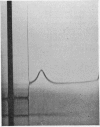Abstract
1. Protocatechuate 4,5-oxygenase, purified 21-fold from extracts of Pseudomonas testosteroni, was examined in the ultracentrifuge and assigned a mol.wt. of about 140000. 2. When diluted, the enzyme rapidly lost activity during catalysis. Inactivation was partially prevented by l-cysteine. 3. With a saturating concentration of protocatechuate (1·36mm), Km for oxygen was 0·303mm. This value is greater than the concentration of oxygen in water saturated with air at 20°. 4. Cell extracts converted protocatechuate into γ-carboxy-γ-hydroxy-α-oxovalerate, which was isolated as its lactone. 5. γ-Carboxy-γ-hydroxy-α-oxovalerate pyruvate-lyase activity was stimulated by Mg2+ ions and mercaptoethanol. Cells grown with p-hydroxybenzoate as carbon source contained higher concentrations of this enzyme than those grown with succinate.
Full text
PDF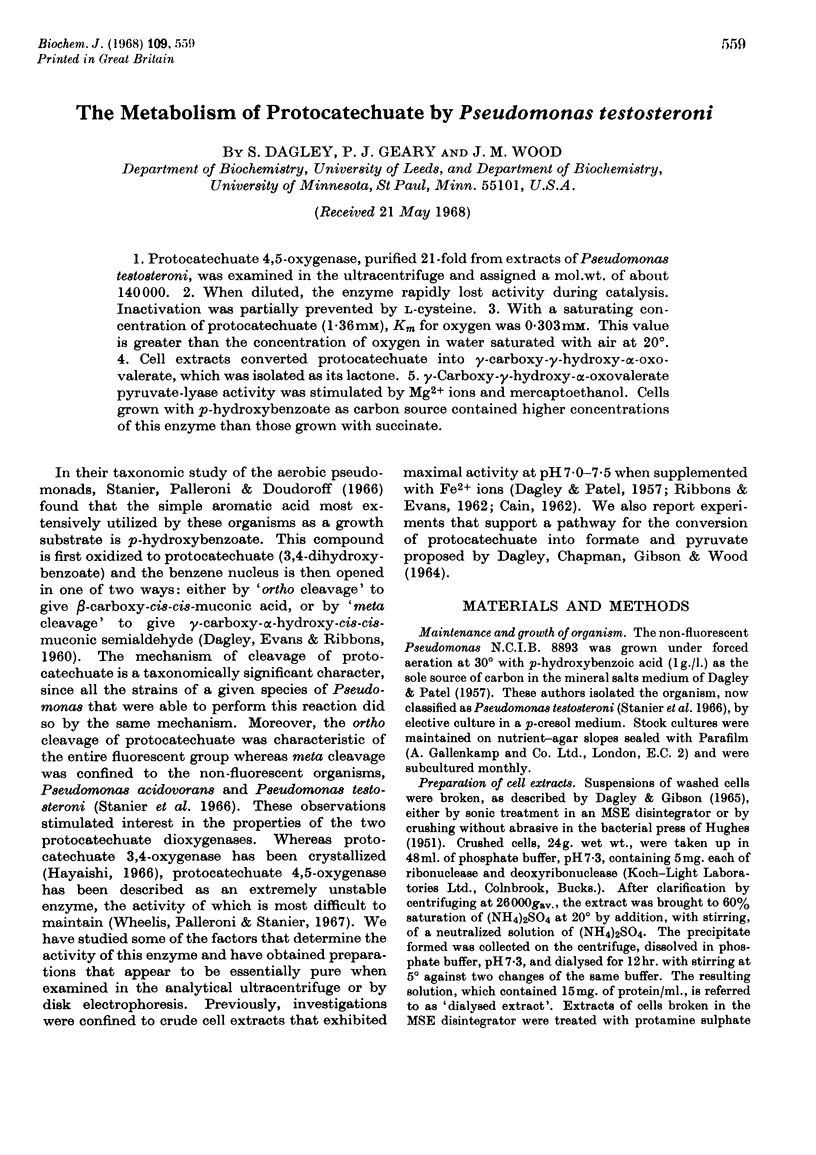
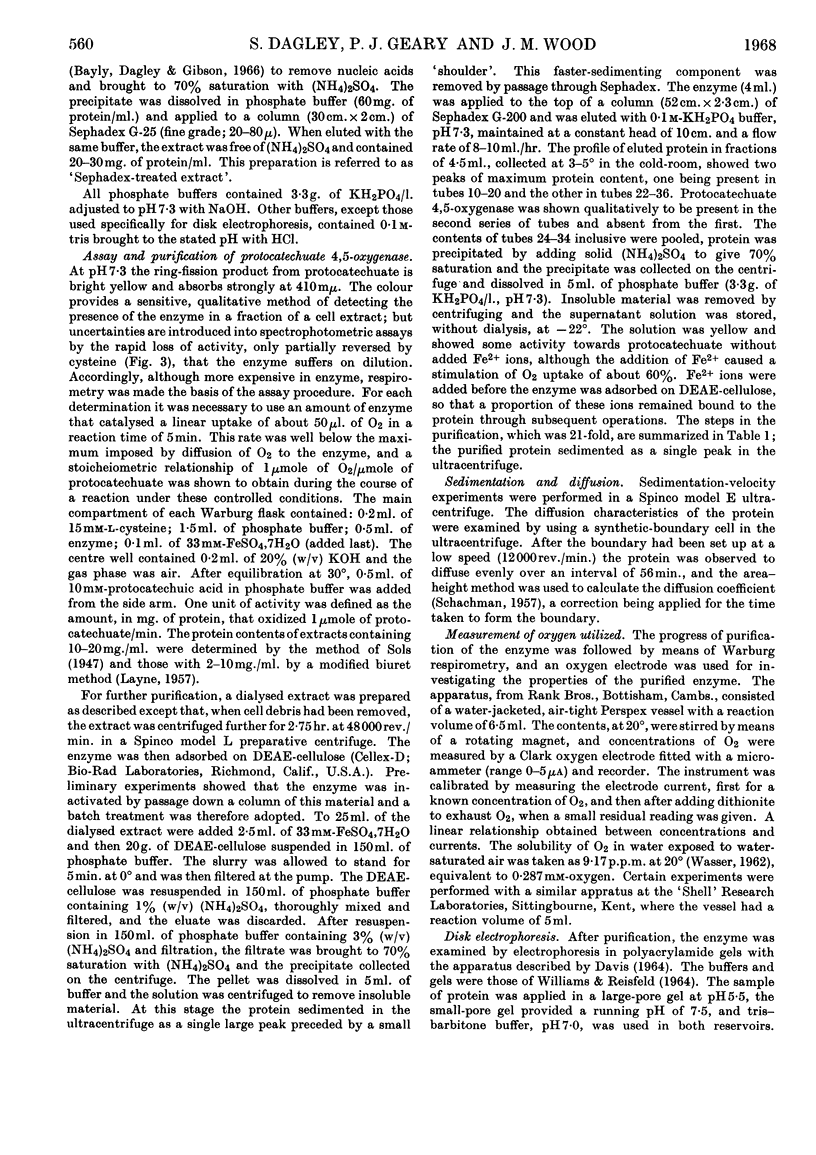
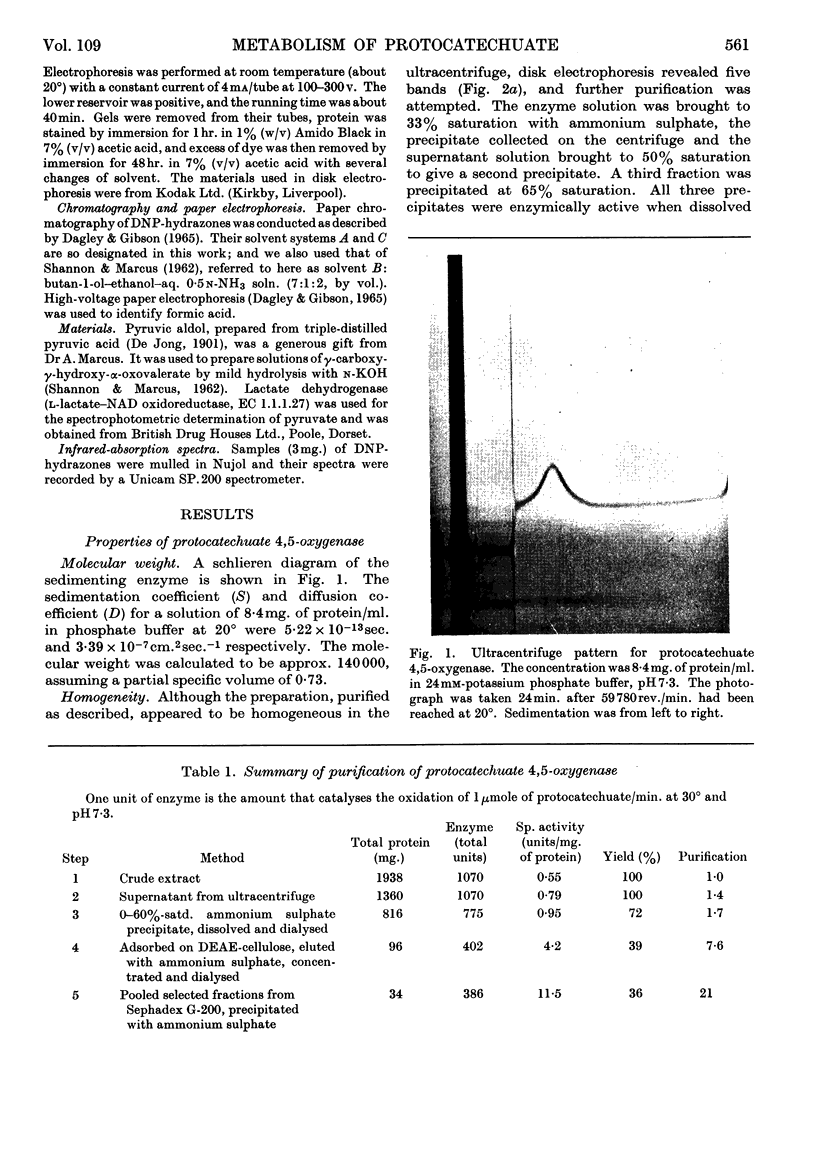
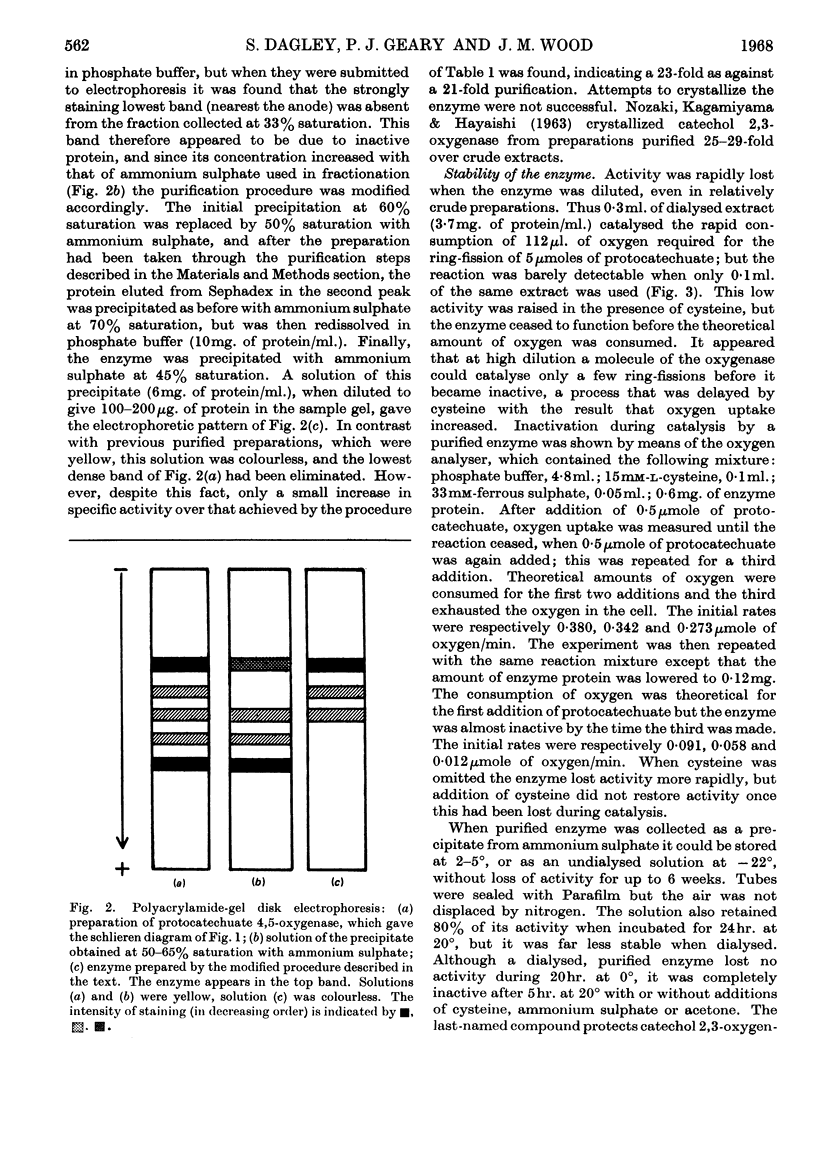
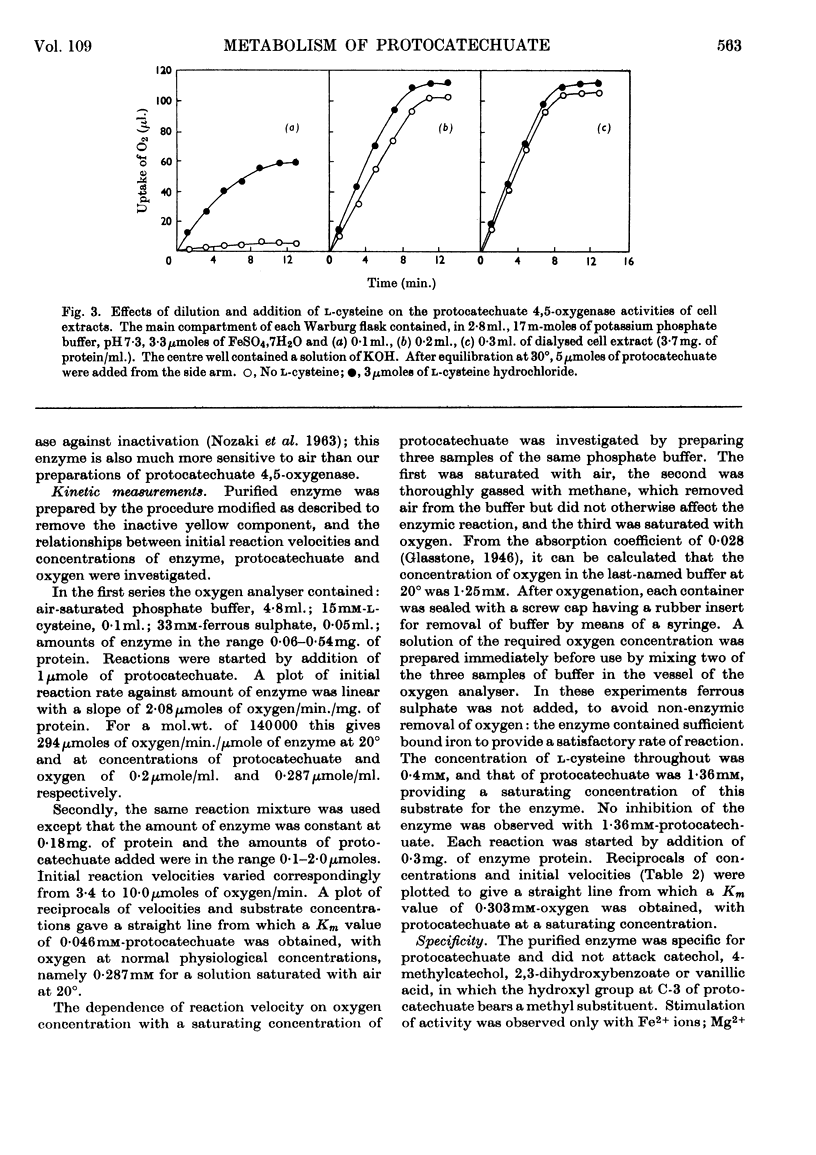
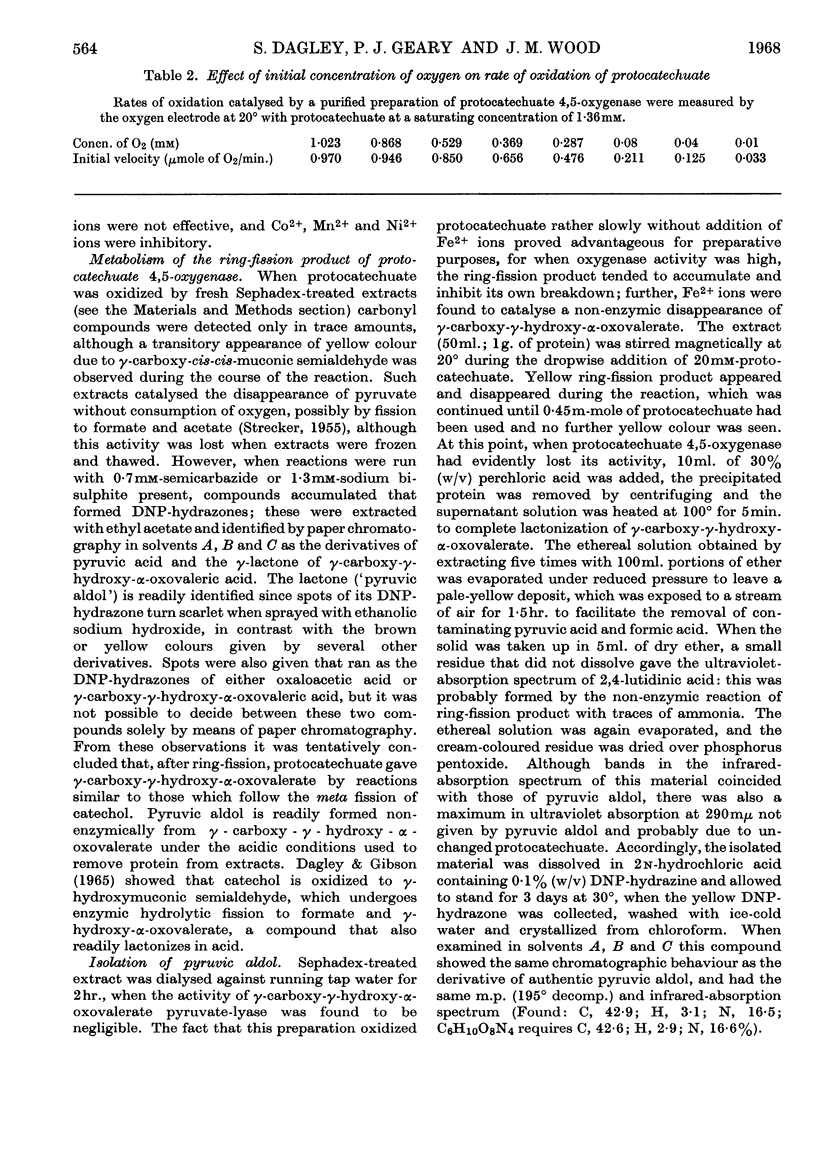
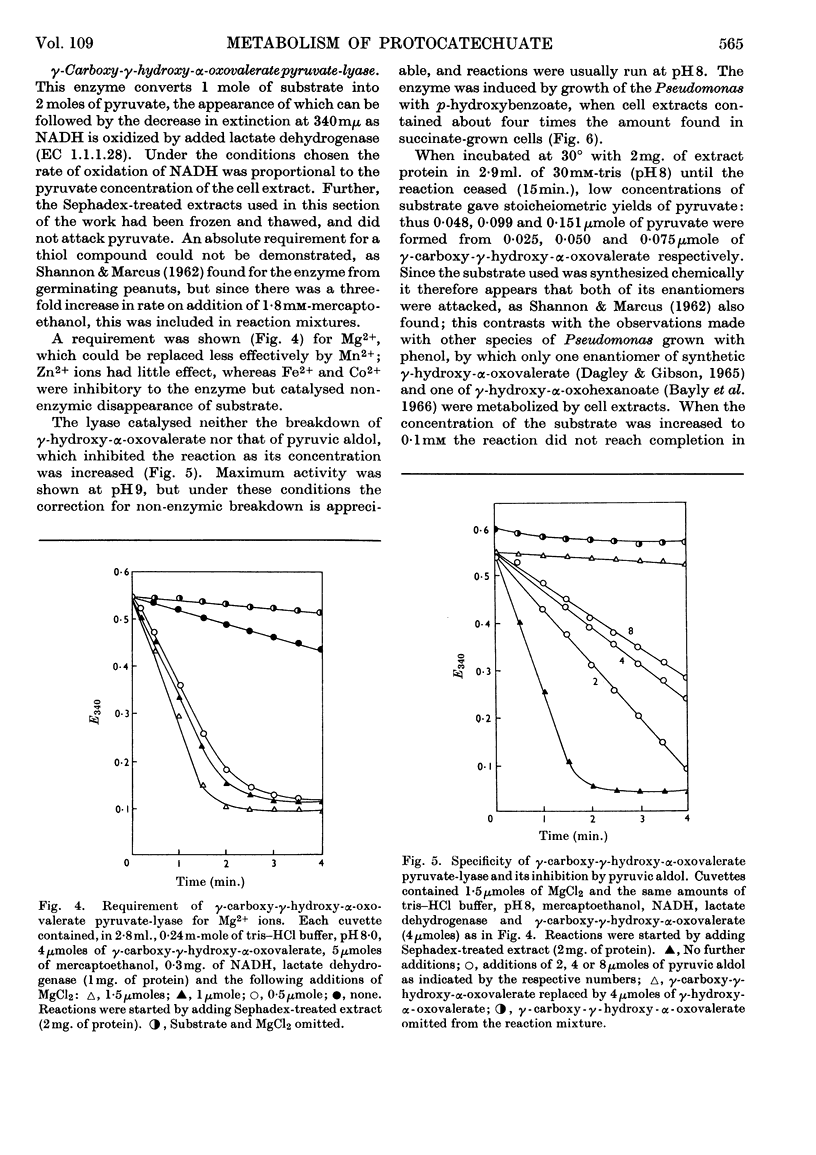
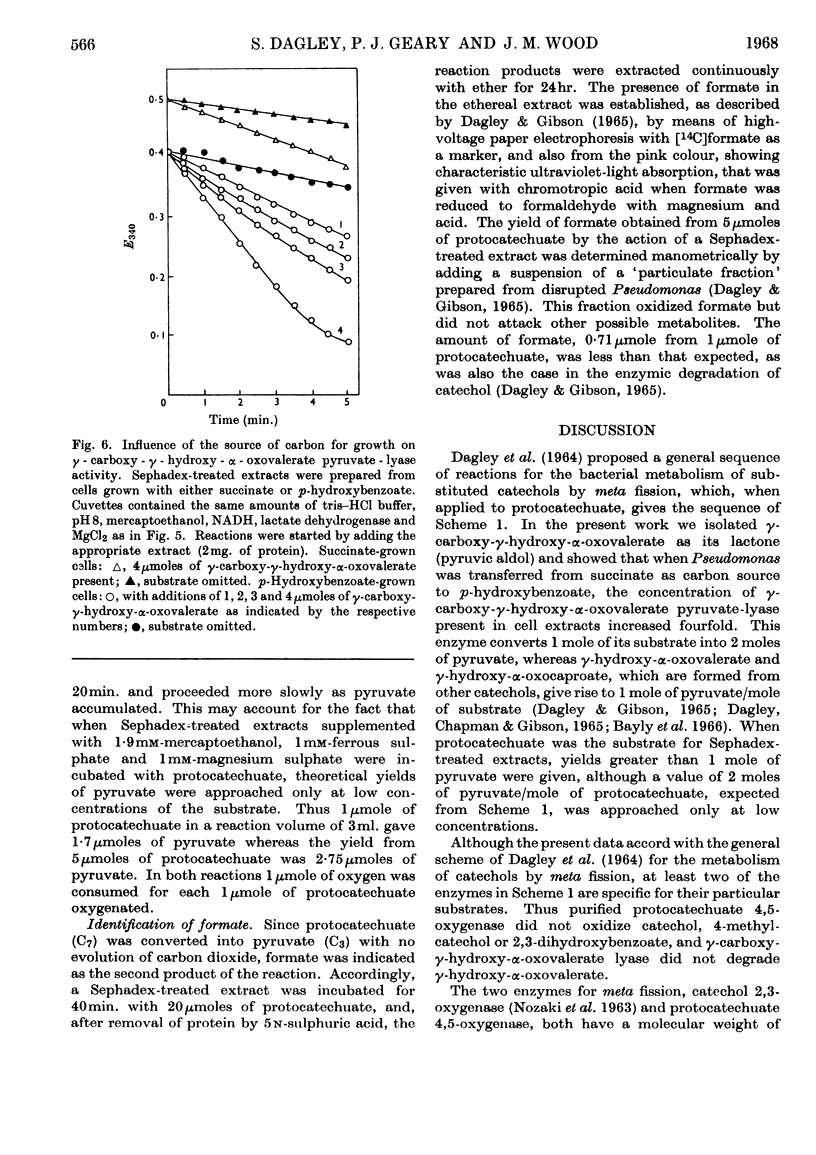
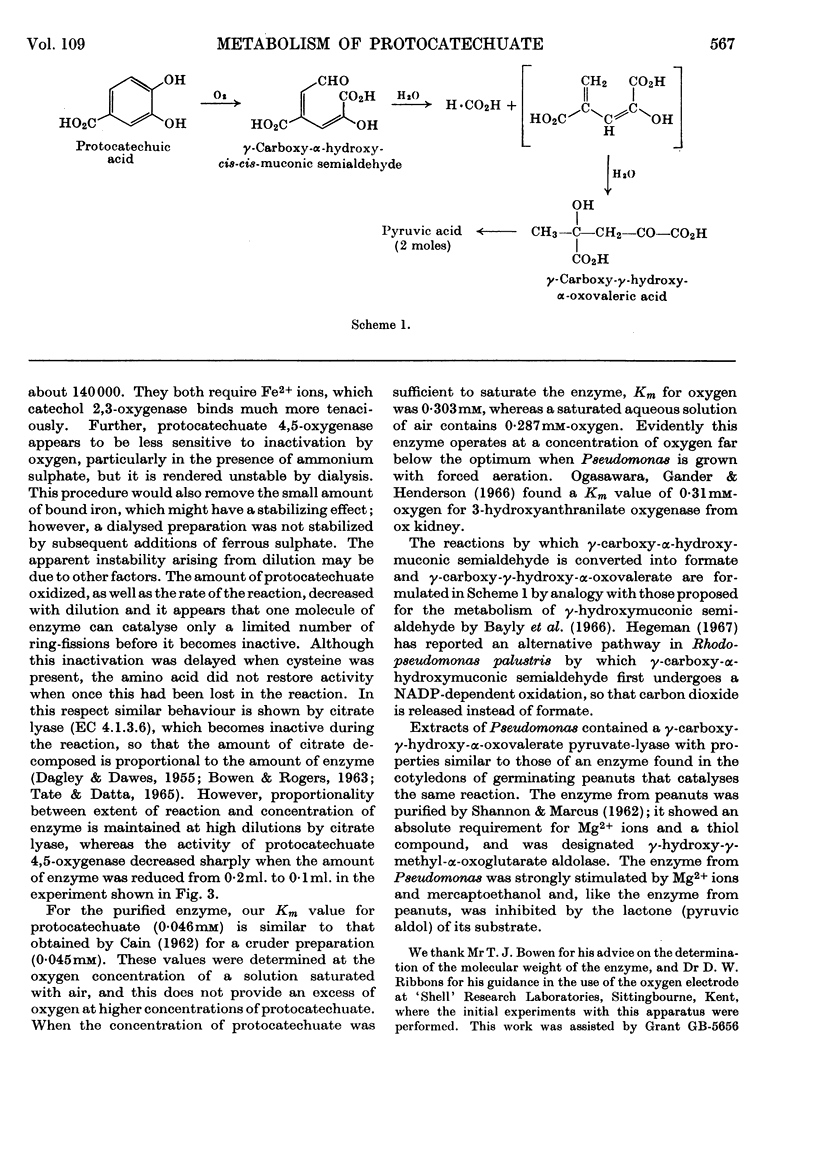
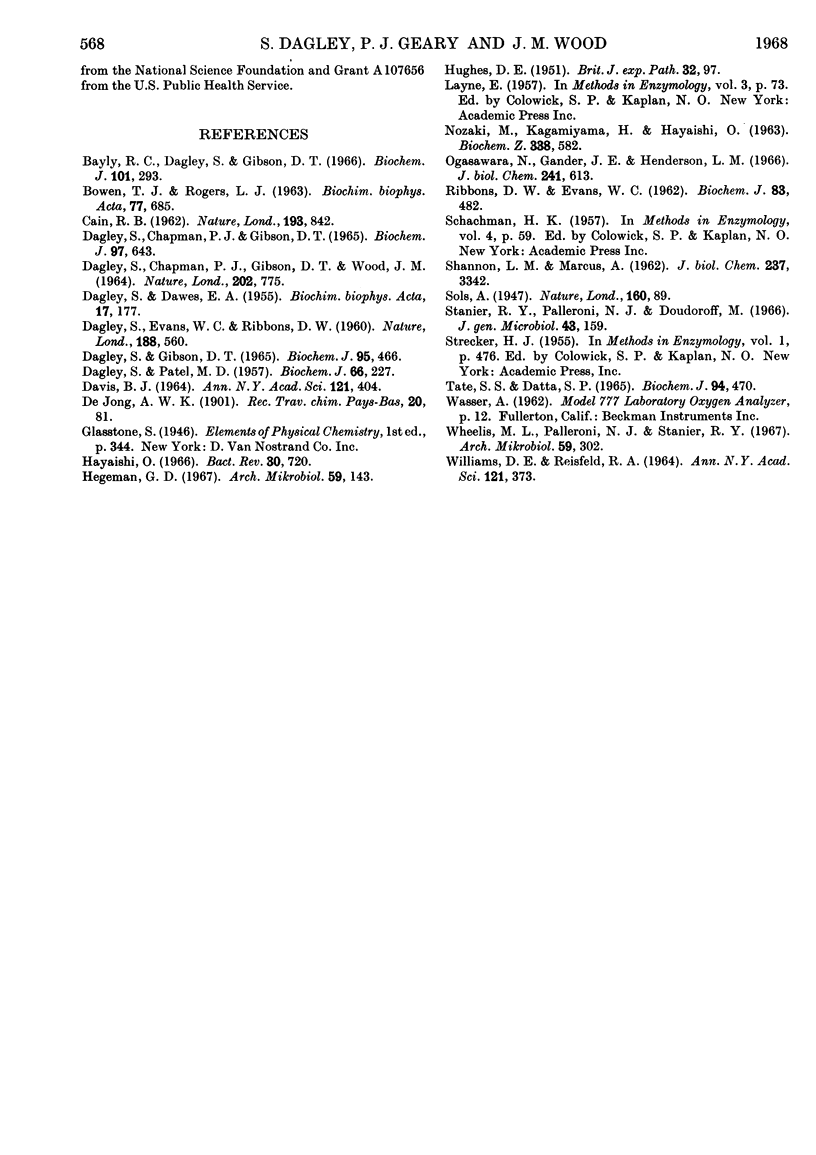
Images in this article
Selected References
These references are in PubMed. This may not be the complete list of references from this article.
- Bayly R. C., Dagley S., Gibson D. T. The metabolism of cresols by species of Pseudomonas. Biochem J. 1966 Nov;101(2):293–301. doi: 10.1042/bj1010293. [DOI] [PMC free article] [PubMed] [Google Scholar]
- CAIN R. B. New aromatic ring-splitting enzyme, protocatechuic acid-4:5-oxygenase. Nature. 1962 Mar 3;193:842–844. doi: 10.1038/193842a0. [DOI] [PubMed] [Google Scholar]
- DAGLEY S., CHAPMAN P. J., GIBSON D. T., WOOD J. M. DEGRADATION OF THE BENZENE NUCLEUS BY BACTERIA. Nature. 1964 May 23;202:775–778. doi: 10.1038/202775a0. [DOI] [PubMed] [Google Scholar]
- DAGLEY S., DAWES E. A. Citridesmolase: its properties and mode of action. Biochim Biophys Acta. 1955 Jun;17(2):177–184. doi: 10.1016/0006-3002(55)90348-6. [DOI] [PubMed] [Google Scholar]
- DAGLEY S., EVANS W. C., RIBBONS D. W. New pathways in the oxidative metabolism of aromatic compounds by microorganisms. Nature. 1960 Nov 12;188:560–566. doi: 10.1038/188560a0. [DOI] [PubMed] [Google Scholar]
- DAGLEY S., GIBSON D. T. THE BACTERIAL DEGRADATION OF CATECHOL. Biochem J. 1965 May;95:466–474. doi: 10.1042/bj0950466. [DOI] [PMC free article] [PubMed] [Google Scholar]
- DAGLEY S., PATEL M. D. Oxidation of p-cresol and related compounds by a Pseudomonas. Biochem J. 1957 Jun;66(2):227–233. doi: 10.1042/bj0660227. [DOI] [PMC free article] [PubMed] [Google Scholar]
- DAVIS B. J. DISC ELECTROPHORESIS. II. METHOD AND APPLICATION TO HUMAN SERUM PROTEINS. Ann N Y Acad Sci. 1964 Dec 28;121:404–427. doi: 10.1111/j.1749-6632.1964.tb14213.x. [DOI] [PubMed] [Google Scholar]
- Dagley S., Chapman P. J., Gibson D. T. The metabolism of beta-phenylpropionic acid by an Achromobacter. Biochem J. 1965 Dec;97(3):643–650. doi: 10.1042/bj0970643. [DOI] [PMC free article] [PubMed] [Google Scholar]
- HUGHES D. E. A press for disrupting bacteria and other micro-organisms. Br J Exp Pathol. 1951 Apr;32(2):97–109. [PMC free article] [PubMed] [Google Scholar]
- Hayaishi O. Crystalline oxygenases of pseudomonads. Bacteriol Rev. 1966 Dec;30(4):720–731. doi: 10.1128/br.30.4.720-731.1966. [DOI] [PMC free article] [PubMed] [Google Scholar]
- Hegeman G. D. The metabolism of p-hydroxybenzoate by Rhodopseudomonas palustris and its regulation. Arch Mikrobiol. 1967;59(1):143–148. doi: 10.1007/BF00406325. [DOI] [PubMed] [Google Scholar]
- NOZAKI M., KAGAMIYAMA H., HAYAISHI O. METAPYROCATECHASE. I. PURIFICATION, CRYSTALLIZATION AND SOME PROPERTIES. Biochem Z. 1963;338:582–590. [PubMed] [Google Scholar]
- Ogasawara N., Gander J. E., Henderson L. M. Purification and properties of 3-hydroxyanthranilate oxygenase from beef kidney. J Biol Chem. 1966 Feb 10;241(3):613–619. [PubMed] [Google Scholar]
- RIBBONS D. W., EVANS W. C. Oxidative metabolism of protocatechuic acid by certain soil pseudomonads: a new ring-fission mechanism. Biochem J. 1962 Jun;83:482–492. doi: 10.1042/bj0830482. [DOI] [PMC free article] [PubMed] [Google Scholar]
- SHANNON L. M., MARCUS A. Gamma-Methyl-gamma-hydroxy-alpha-ketoglutaric aldolase. I. Purification and properties. J Biol Chem. 1962 Nov;237:3342–3347. [PubMed] [Google Scholar]
- Stanier R. Y., Palleroni N. J., Doudoroff M. The aerobic pseudomonads: a taxonomic study. J Gen Microbiol. 1966 May;43(2):159–271. doi: 10.1099/00221287-43-2-159. [DOI] [PubMed] [Google Scholar]
- TATE S. S., DATTA S. P. THE EQUILIBRIUM OF THE REACTION CATALYSED BY CITRATE OXALOACETATE-LYASE. Biochem J. 1965 Feb;94:470–477. doi: 10.1042/bj0940470. [DOI] [PMC free article] [PubMed] [Google Scholar]
- WILLIAMS D. E., REISFELD R. A. DISC ELECTROPHORESIS IN POLYACRYLAMIDE GELS: EXTENSION TO NEW CONDITIONS OF PH AND BUFFER. Ann N Y Acad Sci. 1964 Dec 28;121:373–381. doi: 10.1111/j.1749-6632.1964.tb14210.x. [DOI] [PubMed] [Google Scholar]
- Wheelis M. L., Palleroni N. J., Stanier R. Y. The metabolism of aromatic acids by Pseudomonas testosteroni and P. acidovorans. Arch Mikrobiol. 1967;59(1):302–314. doi: 10.1007/BF00406344. [DOI] [PubMed] [Google Scholar]



